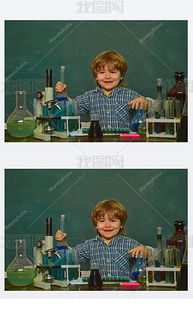What is AR in Chemistry?
Augmented Reality (AR) has been making waves across various industries, and its applications in chemistry are no exception. AR in chemistry refers to the integration of digital information into the real-world environment, enhancing the way we perceive and interact with chemical concepts. This article delves into the multifaceted world of AR in chemistry, exploring its uses, benefits, and potential future developments.
Understanding Augmented Reality

Before we dive into the specifics of AR in chemistry, it’s essential to understand what AR is. Augmented Reality is a technology that overlays digital information onto the real world, creating an enhanced version of reality. This is achieved by using a device’s camera to capture the real-world environment and then overlaying digital content onto it in real-time.
AR can be experienced through various devices, including smartphones, tablets, and specialized AR glasses. The technology relies on sensors, cameras, and processors to track the user’s movements and position, allowing for an interactive and immersive experience.
Applications of AR in Chemistry

AR has found numerous applications in the field of chemistry, making it easier for students, researchers, and professionals to understand complex concepts and perform experiments. Here are some of the key applications:
-
Visualizing Chemical Structures: AR allows users to visualize chemical structures in 3D, making it easier to understand the spatial arrangement of atoms and molecules. This is particularly useful for organic chemistry, where understanding the structure of molecules is crucial.
-
Interactive Learning: AR can be used to create interactive learning experiences, where students can manipulate chemical structures and observe the effects of changes in real-time. This can help in reinforcing concepts and making learning more engaging.
-
Virtual Laboratories: AR can simulate laboratory environments, allowing users to perform experiments without the need for physical equipment. This is particularly beneficial for remote learning and for students who may not have access to a laboratory.
-
Drug Discovery: AR can be used in drug discovery processes to visualize the interactions between molecules and predict their potential effects. This can help in speeding up the drug development process.
-
Training and Safety: AR can be used to train chemists and laboratory personnel on safety procedures and equipment usage. This can help in reducing accidents and improving overall safety in the laboratory.
Benefits of AR in Chemistry

AR in chemistry offers several benefits, making it a valuable tool for both education and research. Here are some of the key benefits:
-
Enhanced Learning: AR provides a more engaging and interactive learning experience, making it easier for students to grasp complex concepts.
-
Improved Visualization: AR allows users to visualize chemical structures and processes in 3D, providing a clearer understanding of the subject matter.
-
Cost-Effective: AR can simulate laboratory environments and experiments, reducing the need for physical equipment and resources.
-
Accessibility: AR can be accessed through various devices, making it more accessible to a wider audience, including remote learners and individuals with disabilities.
-
Collaboration: AR can facilitate collaboration among researchers and students, allowing them to share and discuss their findings in real-time.
Challenges and Future Developments
While AR in chemistry offers numerous benefits, there are also challenges that need to be addressed. Some of these challenges include:
-
Device Limitations: The current generation of AR devices may not be able to fully capture the complexities of chemical structures and processes.
-
Cost: High-quality AR devices can be expensive, limiting their accessibility to some users.
-
Training: Users may require training to effectively utilize AR technology in chemistry.
Despite these challenges, the future of AR in chemistry looks promising. Ongoing research and development are expected to address these challenges and further enhance the capabilities of AR in chemistry. Some potential future developments include:
-
Improved Visualization: Advances in AR technology may allow for more accurate and detailed visualization of chemical structures and processes.
-









